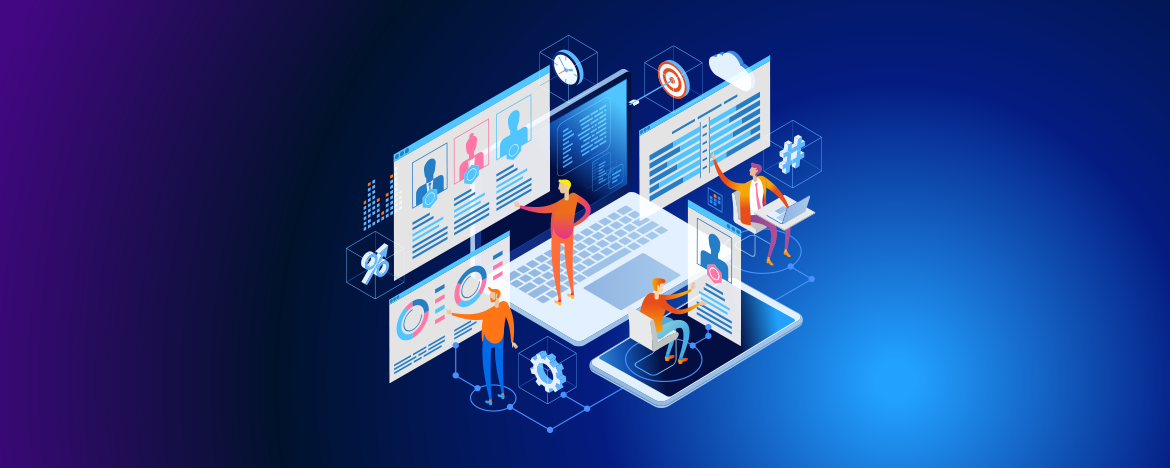Automation is the leading trend in the DevOps space today. It introduces unparalleled consistency, traceability, and auditability; things that were simply not available with the old, manual, and traditional methodologies. This is why the modern organization can scale up fast with minimal issues.
Release Orchestration is also gaining traction. But it’s not always done properly, especially where legacy apps are involved. Let’s take a closer look.
Automation in DevOps
Automation has taken over the core operation of the DevOps pipeline, which involves the build and deployment processes. Additionally, more and more testing procedures are also being automated to free up time and resources. Next in line? Release Orchestration, also known as RO in inner circles.
It’s important to understand that a badly automated RO will always lead to a problematic DevOps ecosystem. For example, a lack of visibility for business owners and support staff will create problems with feature requests, queries, compliance issues, and security questions regarding the release process.
In a nutshell, all individual software components, from CI to provisioning, or testing to code management, are like premium titanium nuts and bolts in a sophisticated V12 engine. However, you will need a mechanic, or in this case, Release Orchestration, to put them together for optimal performance.
DevOps Release orchestration, also known as Application Release Automation (ARA), is going to be the focus of this article to help you achieve your goals.
Release Pipeline Orchestration Challenges
Picking the right RO solution is not as straightforward as you may think. You will need to take a few challenges into consideration before deciding on a strategy.
Onboarding/Training – You may be tempted to build your own workflows to piece together the tools you already have, but that requires creating and maintaining scripts every time something changes. Depending on the volume of work on hand, this may require the hiring of dedicated staff to do so.
Scalability – For large enterprises, scripting becomes virtually useless when you try to scale as managing and tweaking scripts becomes unsustainable. You also need an audit trail and the ability to update security policies without major disruption, which is virtually impossible to do with traditional point tools.
Monitoring – Visualization, intelligence and reporting capabilities are also required. You can’t optimize your processes without a birds-eye-view of what’s going on. These insights must be also accessible to multiple stakeholders, often with non-technical backgrounds. This is the only way to achieve success.The truth is that building your own integration and management platform is time-consuming, risky and likely to have human errors, which are unavoidable. You developers should be working on improving the product with new features, not maintaining the previously mentioned V12 engine that delivers them.
What does Release Orchestration do?
Release orchestration represents an easy way to automate and manage your end-to-end software release pipelines while allowing you to take full advantage of the ecosystem your teams have already created. You can model your software development and release process as sequence templates.
What you get in the end is a complete pipeline that can be triggered seamlessly when required. Release Orchestration handles all the interactions with external systems such as testing, deployment, CI software like Jenkins, ticketing systems (JIRA), while presenting a holistic (and accessible) overview.
With a sound RO solution in place, you’ll have a single coherent interface that cuts through the different formats and tracking methods to help you tame the chaos and exert control. This will replace the old API integrations, which were often loose and created gaps that made scaling up more challenging.
Automation: The Best Way to Ensure Good Results
Even if you possess a largely automated pipeline today, there are probably some some manual steps in the process that are impeding your progress.
You typically have a disparate group of tools solving individual pieces of the puzzle. You’ve got ticketing systems and backlog management, source code control, CI servers, testing products and everything else that goes into the release, operation, provisioning and deployment of your software.
This is where a solid deployment automation solution can help you take your metric to the next level. Not only can you enjoy over 50X faster time-to-market than non-automated systems, you can also free up valuable time and resources previously wasted on release, version control, and security-related tasks.
Needless to say, you can also now add the business activity functionality into your daily routine. This transparency and visibility is extremely crucial in complex setups, as it helps you detect and pinpoint issues as soon as they arise for smooth remediation and minimal downtime, which is extremely crucial.





